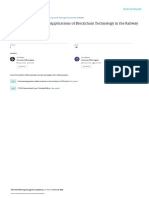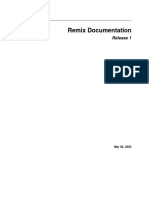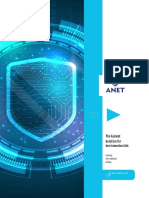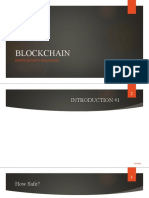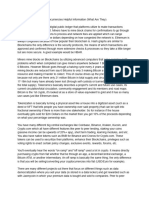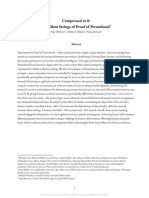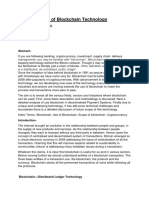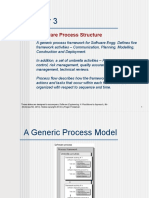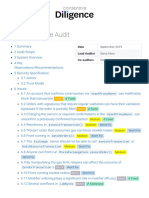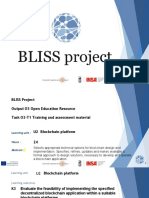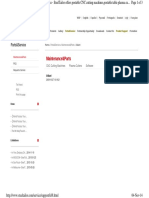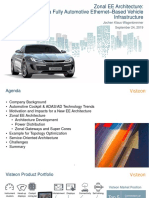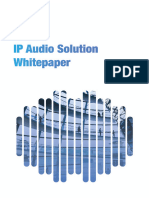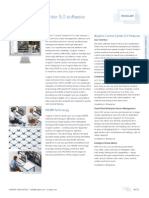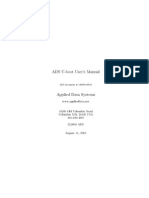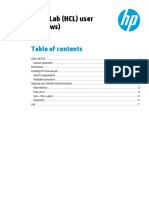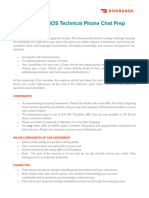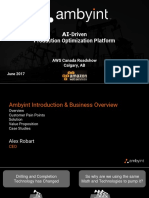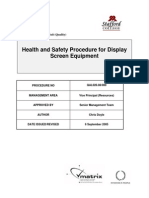CRYPTOMINES SMART
CONTRACT, CODE REVIEW
AND SECURITY ANALYSIS
REPORT
Customer: CryptoMines
Prepared on: 10 Sept 2021
Platform: Binance Smart Chain
Language: Solidity
1
� TABLE OF CONTENTS
Document 4
Introduction 5
Project Scope 6
Executive Summary 7
Code Quality 8
Documentation 9
Use of Dependencies 9
AS-IS Overview 10
Audit Findings 12
Conclusion 13
Our Methodology 14
Disclaimers 16
info@rdauditors.com Page 2
� THIS DOCUMENT MAY CONTAIN CONFIDENTIAL INFORMATION
ABOUT ITS SYSTEMS AND INTELLECTUAL PROPERTY OF THE
CUSTOMER AS WELL AS INFORMATION ABOUT POTENTIAL
VULNERABILITIES AND METHODS OF THEIR EXPLOITATION.
THE REPORT CONTAINING CONFIDENTIAL INFORMATION CAN
BE USED INTERNALLY BY THE CUSTOMER OR IT CAN BE
DISCLOSED PUBLICLY AFTER ALL VULNERABILITIES ARE
FIXED - UPON THE DECISION OF THE CUSTOMER.
info@rdauditors.com Page 3
�Document
Name Smart Contract Code
Review and Security
Analysis Report of
CryptoMines
Platform BSC / Solidity
File 1 stoneToken.sol
028555E7D5C6305B0F8B81F9221
MD5 hash
35659
C2E0C4B45790955F2B030AD04A
SHA256 hash F72E49DDBCD00970BD1B413EB
046F2EF44F8B1
Date 10/09/2021
info@rdauditors.com Page 4
�Introduction
RD Auditors (Consultant) were contracted by CryptoMines (Customer) to
conduct a Smart Contracts Code Review and Security Analysis. This
report represents the findings of the security assessment of the
customer`s smart contracts and its code review conducted between
06 - 10 Sept 2021.
This contract consists of one file.
info@rdauditors.com Page 5
�Project Scope
The scope of the project is a smart contract.
We have scanned this smart contract for commonly known and more
specific vulnerabilities, below are those considered (the full list includes
but is not limited to):
• Reentrancy
• Timestamp Dependence
• Gas Limit and Loops
• DoS with (Unexpected) Throw
• DoS with Block Gas Limit
• Transaction-Ordering Dependence
• Byte array vulnerabilities
• Style guide violation
• Transfer forwards all gas
• ERC20 API violation
• Malicious libraries
• Compiler version not fixed
• Unchecked external call - Unchecked math
• Unsafe type inference
• Implicit visibility level
info@rdauditors.com Page 6
�Executive Summary
According to the assessment, the customer’s solidity smart contract is
near to secure.
You are here
Automated checks are with smartDec, Mythril, Slither and remix IDE. All
issues were performed by our team, which included the analysis of code
functionality, manual audit found during automated analysis were manually
reviewed and applicable vulnerabilities are presented in the audit overview
section. The general overview is presented in the AS-IS section and all
issues found are located in the audit overview section.
We found 0 critical, 0 high, 0 medium, 1 low and 0 very low level issues.
info@rdauditors.com Page 7
�Code Quality
Please find a link that, within this report Context, IERC20,
IERC20Metadata taken from the popular open source.
The libraries within this smart contract are part of a logical algorithm. A
library is a different type of smart contract that contains reusable code.
Once deployed on the blockchain (only once), it is assigned to a specific
address and its properties/methods can be reused many times by other
contracts.
The CryptoMines team has not provided scenario and unit test scripts,
which would help to determine the integrity of the code in an automated
way.
Overall, the code is almost commented. Commenting can provide rich
documentation for functions, return variables and more. Use of Ethereum
Natural Language Specification Format (NatSpec) for commenting is
recommended.
info@rdauditors.com Page 8
�Documentation
The hash of that file is mentioned in the table. As mentioned above, It's
recommended to write comments in the smart contract code, so anyone
can quickly understand the programming flow as well as complex code
logic.
Comments are very helpful in understanding the overall architecture of the
protocol. It also provides a clear overview of the system components,
including helpful details, like the lifetime of the background script.
Use of Dependencies
As per our observation, the libraries are used in this smart contract
infrastructure. Those were based on well known industry standard open
source projects and even core code blocks that are written well and
systematically.
info@rdauditors.com Page 9
� AS-IS Overview
CryptoMines
File And Function Level Report
File: stoneToken.sol
Contract: StoneToken
Import: ERC20
Inherit: ERC20
Observation: Passed
Test Report: Passed
Score: Passed
Conclusion: Passed
Sl. Function Type Observation Test Report Conclusion Score
1 name write Passed All Passed No Issue Passed
2 symbol read Passed All Passed No Issue Passed
3 decimals read Passed All Passed No Issue Passed
4 totalSupply read Passed All Passed No Issue Passed
5 balanceOf read Passed All Passed No Issue Passed
6 transfer read Passed All Passed No Issue Passed
7 allowance write Passed All Passed No Issue Passed
8 approve read Passed All Passed No Issue Passed
9 transferFrom write Passed All Passed No Issue Passed
10 increaseAllowance write Rectify Failed Overflow issue Rectify
11 decreaseAllowance write Passed All Passed No Issue Passed
12 _transfer write Passed All Passed No Issue Passed
13 _mint read Passed All Passed No Issue Passed
14 _burn read Passed All Passed No Issue Passed
15 _approve write Passed All Passed No Issue Passed
16 _beforeTokenTransfer write Passed All Passed No Issue Passed
17 _afterTokenTransfer write Passed All Passed No Issue Passed
info@rdauditors.com Page 10
�Severity Definitions
Risk Level Description
Critical vulnerabilities are usually straightforward to exploit
Critical
and can lead to lost tokens etc.
High High level vulnerabilities are difficult to exploit; however, they
also have a significant impact on smart contract execution,
e.g. public access to crucial functions.
Medium Medium level vulnerabilities are important to fix; however,
they cannot lead to lost tokens.
Low Low level vulnerabilities are most related to outdated,
unused etc. These code snippets cannot have a significant
impact on execution.
Lowest Lowest level vulnerabilities, code style violations and
Code Style/ information statements cannot affect smart contract
Best Practice execution and can be ignored.
info@rdauditors.com Page 11
�Audit Findings
Critical
No critical severity vulnerabilities were found.
High
No high severity vulnerabilities were found.
Medium
No medium severity vulnerabilities were found.
Low
=> function “increaseAllowance” has an overflow vulnerability issue.
Very Low
No very low severity vulnerabilities were found.
info@rdauditors.com Page 12
�Conclusion
We were given a contract file and have used all possible tests based on
the given object. The contract is written systematically, so it is ready to go
for production after fixing the mention issue.
Since possible test cases can be unlimited and developer level
documentation (code flow diagram with function level description) not
provided, for such an extensive smart contract protocol, we provide no
such guarantee of future outcomes. We have used all the latest static tools
and manual observations to cover maximum possible test cases to scan
everything.
The security state of the reviewed contract is near to “secure”
info@rdauditors.com Page 13
�Our Methodology
We like to work with a transparent process and make our reviews a
collaborative effort. The goals of our security audits are to improve the
quality of systems we review and aim for sufficient remediation to help
protect users. The following is the methodology we use in our security
audit process.
Manual Code Review:
In manually reviewing all of the code, we look for any potential issues
with code logic, error handling, protocol and header parsing,
cryptographic errors, and random number generators. We also watch for
areas where more defensive programming could reduce the risk of future
mistakes and speed up future audits. Although our primary focus is on
the in-scope code, we examine dependency code and behavior when it
is relevant to a particular line of investigation.
Vulnerability Analysis:
Our audit techniques included manual code analysis, user interface
interaction, and whitebox penetration testing. We look at the project's
web site to get a high level understanding of what functionality the
software under review provides. We then meet with the developers to
gain an appreciation of their vision of the software. We install and use
the relevant software, exploring the user interactions and roles. While we
do this, we brainstorm threat models and attack surfaces. We read
design documentation, review other audit results, search for similar
projects, examine source code dependencies, skim open issue tickets,
and generally investigate details other than the implementation.
info@rdauditors.com Page 14
�Documenting Results:
We follow a conservative, transparent process for analyzing potential
security vulnerabilities and seeing them through successful remediation.
Whenever a potential issue is discovered, we immediately create an
Issue entry for it in this document, even though we have not yet verified
the feasibility and impact of the issue. This process is conservative
because we document our suspicions early even if they are later shown
to not represent exploitable vulnerabilities. We generally follow a process
of first documenting the suspicion with unresolved questions, then
confirming the issue through code analysis, live experimentation, or
automated tests. Code analysis is the most tentative, and we strive to
provide test code, log captures, or screenshots demonstrating our
confirmation. After this we analyse the feasibility of an attack in a live
system.
Suggested Solutions:
We search for immediate mitigations that live deployments can take, and
finally we suggest the requirements for remediation engineering for
future releases. The mitigation and remediation recommendations
should be scrutinised by the developers and deployment engineers, and
successful mitigation and remediation is an ongoing collaborative
process after we deliver our report, and before the details are made
public.
info@rdauditors.com Page 15
�Disclaimers
RD Auditors Disclaimer
The smart contracts given for audit have been analysed in accordance
with the best industry practices at the date of this report, in relation to:
cybersecurity vulnerabilities and issues in smart contract source code,
the details of which are disclosed in this report, (Source Code); the
Source Code compilation, deployment and functionality (performing the
intended functions).
Because the total number of test cases are unlimited, the audit makes
no statements or warranties on the security of the code. It also cannot be
considered as a sufficient assessment regarding the utility and safety of
the code, bugfree status or any other statements of the contract. While
we have done our best in conducting the analysis and producing this
report, it is important to note that you should not rely on this report only -
we recommend proceeding with several independent audits and a public
bug bounty program to ensure security of smart contracts.
Technical Disclaimer
Smart contracts are deployed and executed on the blockchain. The
platform, its programming language, and other software related to the
smart contract can have their own vulnerabilities that can lead to hacks.
Thus, the audit can’t guarantee explicit security of the audited smart
contracts.
info@rdauditors.com Page 16
�Email: info@rdauditors.com
Website: www.rdauditors.com








